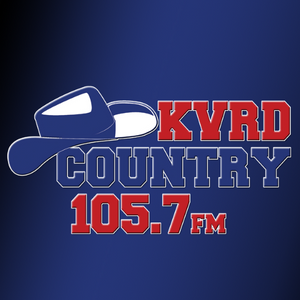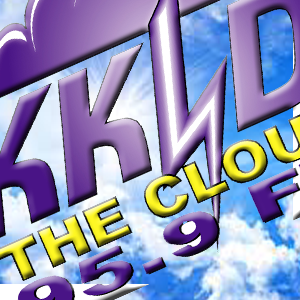Coconino National Forest fire managers will continue work on several crucial prescribed fire projects next week while wind and weather conditions are favorable.
Three projects are planned for next week:
Upper Beaver Creek Project
- When: Planned forMonday – Thursday (Nov. 6-9). Ignitions typically being around 10 a.m. if conditions are appropriate.
- Where:Mogollon Rim Ranger District. Approximately 13 miles northwest of Clints Well, southeast of Stoneman Lake. GPS: 714344, -111.438100.
- Why:This project will reduce hazardous forest fuels and return fire to the fire-dependent ecosystem, helping restore the forest to healthier conditions and reduce the possibility of catastrophic wildfires.
- Size:3,000 acres total (divided into smaller blocks each day).
- Duration:This treatment will be divided into separate areas over several days. Depending on weather and wind conditions, this burn could last two to four days.
- Method/Type of burn:This is a broadcast burn, with a mix of initial entry and maintenance. Broadcast burning means firefighters use a method of drip torches and walk across the landscape to broadcast the fire across large swaths of land. The other method of burning is pile burning, which means burning forest slash that has been piled up from mechanical or hand-thinning projects. Pile burns are done during winter months when snow is on the ground so the heat can be managed safely.
Initial entry burns mean there is no documented history of prescribed or other wildfire in the area, meaning there is a significant amount of hazardous forest fuels in the area. Initial entry burns produce much thicker smoke than maintenance burns.
Maintenance burns means fire has moved across that particular landscape within at least the last decade. Maintenance burns typically produce less smoke than broadcast burns due to the lesser amount of forest fuels and are used to “maintain” an area, so it does not accumulate large amounts of hazardous forest fuels.
- Smoke Impacts:Winds are predicted to come from the southwest, pushing smoke toward the northeast through the day. Smoke will be noticeable to surrounding communities, including Camp Verde, Sedona, Clints Well and likely seen as far as Flagstaff. Smoke impacts are worst during evening and early morning hours after a burn and act like water, draining into canyons and valleys. Smoke will likely impact Lake Mary Road, Stoneman Lake, and Verde Valley during evening and early morning hours, dissipating as the day progresses.
- Closures/Restrictions:There are no closures associated with this burn.
Sawmill Project
- When: Planned forMonday – Thursday (Nov. 6-9). Ignitions typically being around 10 a.m. if conditions are appropriate.
- Where:Mogollon Rim Ranger District. Approximately 17 miles northwest of Clints Well, southeast of Stoneman Lake. GPS: 758259, -111.472926.
- Why:This project will reduce hazardous forest fuels and return fire to the fire-dependent ecosystem, helping restore the forest to healthier conditions and reduce the possibility of catastrophic wildfires.
- Size:3,000 acres total (divided into smaller blocks each day).
- Duration:This treatment will be divided into separate areas over two to four days, depending on weather and wind conditions as well as available resources.
- Method/Type of burn:This is a broadcast burn, with a mix of initial entry and maintenance.
- Smoke Impacts:Winds are predicted to come from the southwest, pushing smoke toward the northeast through the day. Smoke will be noticeable to surrounding communities, including Camp Verde, Sedona, Clints Well and likely seen as far as Flagstaff. Smoke impacts will likely be felt in areas of Winslow, Twin Arrows, and Holbrook.
- Closures/Restrictions:There are no closures associated with this burn.
Bar-M Project
- When: Planned forTuesday – Thursday (Nov. 7-9). Ignitions typically being around 10 a.m. if conditions are appropriate.
- Where:Flagstaff Ranger District. Approximately 18 miles directly east of Sedona, south of Mormon Lake. GPS: 873031, -111.445032.
- Why:This project will reduce hazardous forest fuels south of the Mormon Lake community to help protect that community from catastrophic wildfire.
- Size:1,742 acres total (divided into smaller blocks each day).
- Duration:This treatment will be divided into three separate areas over three days
- Method/Type of burn:This is a broadcast maintenance burn.
- Smoke Impacts:Winds are predicted to come from the southwest, pushing smoke toward the northeast through the day. Smoke will be noticeable to surrounding communities, including Flagstaff, Sedona, Clints Well and likely seen as far as Camp Verde. Smoke impacts are worst during evening and early morning hours after a burn and will likely impact areas such as Mormon Lake Village during those times, dissipating as the day progresses.
- Closures/Restrictions:A section of the Arizona Trail will be closed for the duration of this project and rerouted to use Lake Mary Road and County Road 90. No roads or other trails will be closed or restricted due to this burn.
During prescribed fire, smoke will be visible from several areas across the forest.
Northern Arizona residents and forest visitors are reminded to look for information regarding planned prescribed fire projects if smoke is visible.
Please refrain from contacting dispatch or 911 to report prescribed fire smoke so lines can remain open for emergencies.
Fire managers will continue to implement prescribed fire through fall and winter months following guidance from the Forest Service’s 10-year Wildfire Crisis Strategy, which aims to increase the use of fire and other treatments on the landscape to improve forest health and protect communities.
To meet the goals of the Wildfire Crisis Strategy, including protection of communities located within fire-adapted ecosystems, prescribed fire and other fuels treatments will be implemented during all advantageous environmental conditions.
Implementing prescribed fire during fall and winter months will lead to short-term smoke impact, versus the heavier and longer-lasting smoke impact produced by unwanted high-severity wildfires during summer months.
The long-term intent of prescribed fire on the Coconino NF is to reduce future smoke impacts and fire intensity should a future wildfire start in any of the above project areas.
Area residents and forest visitors can monitor smoke impact at airnow.gov.
Prescribed fire is always dependent upon weather and wind conditions, as well as approval from Arizona Department of Environmental Quality (ADEQ). The public can view approved prescribed fire projects on ADEQ’s website at smoke.azdeq.gov. Coconino NF prescribed fire projects begin with the designator “COF.”
Prior to implementing prescribed fire plans, the Coconino NF follows steps outlined in the agency-wide National Prescribed Fire Review. These steps include items such as validating and updating prescribed fire plans with the most recent science and modeling, incorporating new drought monitoring data, ensuring the patrol plan and long-term patrol strategy is documented and communicating with and involving landowners, cooperators, elected officials and partners as we implement prescribed fires.










